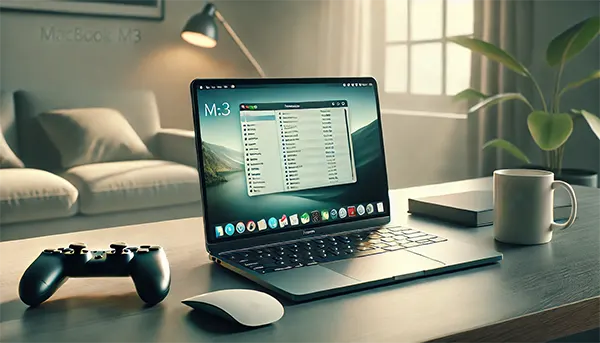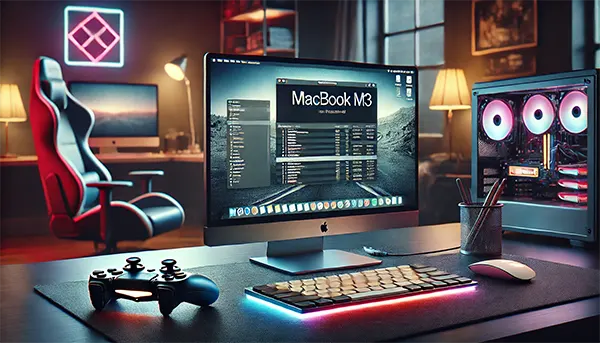Best Emulators for MacBook M3 in 2025: What Works Without Issues?

With Apple’s latest M3 chip powering MacBooks in 2025, many users are looking for reliable emulators that can run smoothly on macOS. Whether for Android apps, console gaming, or other applications, emulator performance has always been a concern due to Apple’s hardware and software restrictions. In this guide, we will explore the best emulators for MacBook M3, their compatibility, and tips for optimising performance.
Has Emulator Compatibility Improved with the Latest M3 Chip?
The Apple M3 chip has introduced significant performance improvements, but software compatibility remains a critical factor for emulation. Many developers have optimised their software to take advantage of the new architecture, resulting in better compatibility and reduced performance bottlenecks.
One of the key advancements is improved Rosetta 2 translation efficiency, allowing Intel-based applications, including some emulators, to run with minimal slowdowns. Additionally, ARM-native versions of popular emulators have been released, enhancing overall performance.
However, not all emulators fully support the M3 chip yet. Some software still faces issues due to Apple’s security policies and macOS updates. Users should always check for updates and community feedback before installing an emulator.
Android Emulators That Work Best on MacBook M3
Android emulation on macOS has always been tricky, but with the M3 chip, several emulators have adapted well to the new architecture. Among the best options available are:
NoxPlayer: Known for its lightweight design, NoxPlayer offers excellent performance on MacBook M3. It supports key mapping, multi-instance features, and smooth gameplay for most Android applications.
BlueStacks: BlueStacks has introduced an ARM-native version optimised for Apple silicon, delivering better speed and lower resource usage. It remains a top choice for Android gaming on macOS.
MuMu Player: MuMu Player has gained traction due to its strong performance on macOS. It is less resource-intensive than some competitors, making it ideal for mid-range MacBook M3 models.
Can You Run Switch, PS2, Xbox 360, and Other Consoles Without Lag?
Console emulation on MacBooks has improved significantly with the M3 chip, but not all platforms deliver lag-free performance. ARM-native emulators tend to offer better results than their Intel-translated counterparts.
Switch Emulation: Ryujinx and Yuzu are the primary emulators for Nintendo Switch, and while they work on macOS, performance is highly dependent on game compatibility and macOS drivers. Graphical glitches and occasional crashes may still occur.
PS2 Emulation: AetherSX2, one of the most promising PS2 emulators, runs decently on MacBook M3, but some demanding titles may experience frame drops. Optimisation settings are crucial for maintaining stability.
Xbox 360 Emulation: Xenia is the leading Xbox 360 emulator, but it has limited macOS support. Running it through virtualisation may work, but performance is inconsistent. Windows-based solutions remain preferable for Xbox 360 emulation.
Optimisation Tips for Console Emulation on Mac M3
For users looking to get the best performance from console emulators on MacBook M3, here are some key optimisation steps:
Use ARM-Native Builds: Always opt for ARM-native versions of emulators whenever available. These versions utilise Apple’s silicon more efficiently.
Enable Metal Graphics API: Metal is Apple’s graphics API that enhances rendering performance. If your emulator supports it, enabling Metal can significantly boost frame rates.
Adjust CPU and RAM Allocation: Some emulators allow users to allocate more system resources. Tweaking CPU and RAM settings can prevent slowdowns during gameplay.

Performance Optimisation Tips for Emulators on MacBook M3
To ensure smooth emulation on MacBook M3, it is essential to fine-tune your setup and system settings. The following best practices can help maximise performance and stability.
Update to the Latest macOS Version: Apple regularly improves hardware compatibility with software updates. Keeping macOS updated ensures optimal emulator support.
Disable Background Applications: Running multiple applications in the background can drain system resources. Closing unnecessary programs can free up memory and processing power for the emulator.
Use External Controllers: Many games require precise controls, and macOS does not always handle keyboard inputs efficiently. Using an external game controller enhances the gameplay experience.
Recommended System Settings for Emulation
Adjusting system settings can also improve emulator performance on MacBook M3. Some recommended tweaks include:
Reduce Display Resolution: Running emulators at lower resolutions can ease the GPU load and improve frame rates.
Enable High-Performance Mode: MacBook M3 devices have power-saving modes that may throttle performance. Switching to high-performance mode ensures maximum system efficiency.
Use SSD Storage: Running emulators from an SSD instead of an external hard drive can significantly reduce loading times and improve overall stability.
